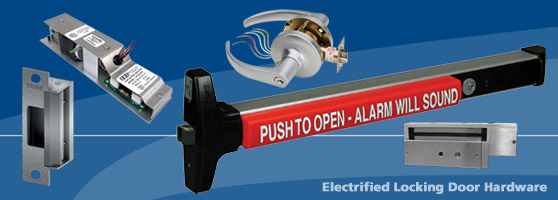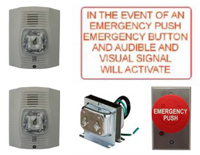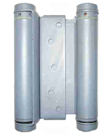
Considerations when choosing electrified door hardware
When choosing a solution for securing your entrances, there are many options to provide security and peace of mind. At K.M Thomas, not only can we provide you with quality products, but we work with you to created complete solutions. Key information about door security hardware will help you make an informed choice.
There are many options available when choosing electrified door hardware. Considerations include the type of project, budget and code requirements. As with the choice of mechanical hardware, there are also many choices available for function and the appearance of electrical door hardware products (door security hardware).
When choosing a lock system, you will chose an option based on what happens when the power is interrupted. A lock that is powered to lock is called fail-safe (or fail-unlocked), whereas a lock powered to unlock is called fail-secure (or fail-locked). When power is removed from a fail-safe lock, the door is unlocked. Fail-secure locks offer a higher level of security because during a loss of power it will remain locked. Security and safety both need to be considered when choosing which function of lock is used on an opening. There are also building code considerations which will limit or dictate which option is chosen.
Electric strikes are a simple solution for most styles of door locks
Electric door strikes are often chosen to provide the unlocking, unlatching function for openings. Conveniently, electric strikes are available to work with most styles of locking hardware such as cylindrical, mortise and exit device locks. They can represent a simple method of accomplishing this task, but there are more elegant and secure options.
Fire rated openings must be positively latched during a fire alarm condition, so the choice of hardware must take this into account. A fail-safe electric mortise or cylindrical lock (where the handles are unlocked when power is removed) could be used on a fire rated opening while a fail-safe electric strike could not. This is because a fail-safe electric strike would not keep the door latched during a loss of power. When an electric strike is unlocked, the door can be pushed or pulled open without turning a handle to retract the latch.
Many lock manufacturers offer a wide range of electrified options for their mortise and cylindrical locks, as well as exit devices or panic sets. Mortise and cylindrical, electric locks allow one or both handles to be locked or unlocked electrically. Electric exit devices can be ordered with exterior lever trims which can be used to provide access.
Electric latch retraction is an elegant method of unlocking and unlatching a door that has an exit device. When power is applied, the latch is retracted which allows the door to be pulled open. Modern electric latch retraction exit devices often use a motor to retract the latch which is both quiet and quick. For many brands of exit devices, there are kits available to add latch retraction, which can be convenient and cost saving.
Maglocks provide increased security
Electro-magnetic locks are commonly referred to as “Maglocks”. These can be a good solution when alternate methods are not practical. They are often simple to install and adjust and can provide thousands of pounds of holding force. They can also be added to some existing openings to increase the level of security for those openings. Before opting for a maglock system, there are important criteria to consider:
- Building codes in many areas require a building to have a fire alarm system, and that the power supply is connected to it. Typically, when the fire alarm is activated (detects fire or activation of a pull station), the maglocks must release and allow free exiting.
- No special knowledge of how to unlock the door in the path of egress (exit). A switch mounted inside an exit device that turns the maglock off could perform this function.
- Signage at each door may be required to explain when the door will unlock.
- Mechanical locking of the door may be required so that, during a loss of power, the opening is still secure from one side. Maglocks are only locked when electricity is applied so they are by design fail-safe.
- Permits, specific to the use of maglocks may be required in some areas. The application for these can be costly. If special permits are required, additional site visits may also be required to show that the maglock system meets the permit and local code requirements.
No one solution can be applied to all openings. Electric locks continue to evolve. There are now many high quality options available to suit the most demanding electric locking needs.
For more information, or assistance in choosing the correct electrified lock for your next door hardware application, please send me an email or give us a call.
John Kalnay, EHC
K.M. Thomas Company Ltd.
Email: john.k@kmthomas.com
Toll Free: 1-888-383-4105





